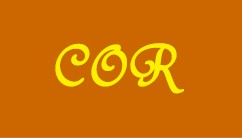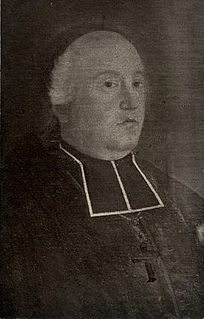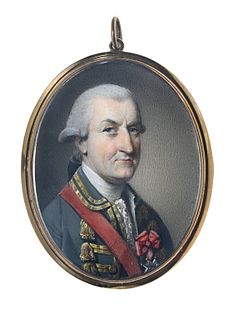 W
WThe 1st Canadian Regiment, an Extra Continental regiment, was raised by James Livingston to support Colonial efforts in the American Revolutionary War during the invasion of Quebec. Livingston recruited men from Chambly, Quebec as early as September 1775, but a formal regimental designation was made by Richard Montgomery on November 20, 1775, with recognition by the Second Continental Congress following on January 8, 1776. The regiment, which never approached its authorized size of 1,000 men, saw action primarily in the Canadian theater and New York, and was disbanded on January 1, 1781, at King's Ferry, New York.
 W
WThe 2nd Canadian Regiment, also known as Congress' Own or Hazen's Regiment, was authorized on January 20, 1776, as an Extra Continental regiment and raised in the province of Quebec for service with the Continental Army under the command of Colonel Moses Hazen. All or part of the regiment saw action at Staten Island, Brandywine, Germantown and the Siege of Yorktown. Most of its non-combat time was spent in and around New York City as part of the forces monitoring the British forces occupying that city. The regiment was disbanded on November 15, 1783, at West Point, New York.
 W
WPierre Ayotte was a French-Canadian soldier and fur trader who served with the Americans during the American Revolutionary War. Ayotte, a habitant from Kamouraska, was equally devoted to the revolutionary cause as Clément Gosselin.
 W
WCharles François Bailly de Messein was a priest active in the British province of Quebec during the American Revolutionary War. He is best known for his Loyalist activism during the American invasion of Quebec, when he was injured during the Battle of Saint-Pierre, and for publicly supporting a planned university that his bishop opposed.
 W
WFrançois Riday Busseron was a Canadien fur trader, general store operator, and militia captain in the American village of Vincennes. He supported the Americans during the American Revolution and funded the first American flag made in Indiana. As a U.S. citizen, he would serve as a judge in the court of general quarter sessions.
 W
WJean-Gabriel Cerré was a Quebec-born merchant in the Illinois Country and St. Louis.
 W
WMichel-Eustache-Gaspard-Alain Chartier de Lotbinière, 2nd Marquis de Lotbinière, though to keep political favour with the British he never used the title. He was seigneur of Vaudreuil, Lotbinière and Rigaud. He was the Speaker of the House of Commons in Lower Canada who saw to it that the French language was recognised as equal to English in the Quebec Parliament, where a painting of him giving the speech still hangs above the Speaker's chair.
 W
WPierre Douville was a French-Canadian naval captain and lieutenant who served in the American Revolution and French Revolution. Born on present day Prince Edward Island, Douville survived the 1758 Acadian deportation to France. He joined the French Navy and lived in Rhode Island during the American Revolution. During the American Revolution, he served as a French military intelligence officer who provided General George Washington with British ship and troop movements. Douville also took part in a smuggling mission in 1775, when he brought weapons and gunpowder from the French West Indies to the United States. Douville was one of the original members of the Society of the Cincinnati. Douville died in 1794 fighting for the French during the Glorious First of June.
 W
WFather Pierre Gibault was a Jesuit missionary and priest in the Northwest Territory in the 18th century, and an American Patriot during the American Revolution.
 W
WClément Gosselin was a French Canadian soldier who served in Moses Hazen's 2nd Canadian Regiment of the Continental Army during the American Revolutionary War. He recruited other French Canadians, assisted in American operations during and after the Battle of Quebec, and, following the American retreat from Quebec in 1776, continued to serve in Hazen's regiment. Included in that service were spy missions to the province of Quebec.
 W
WJean-Baptiste Hamelin was a French Canadian soldier who fought on the U.S. side of the American Revolutionary War, serving in Moses Hazen's 2nd Canadian Regiment of the Continental Army.
 W
WJean-François Hamtramck (1756–1803) was a French Canadian who served as an officer in the US Army during the American Revolutionary War and the Northwest Indian War. In the Revolution, he participated in the Invasion of Quebec, the Sullivan Expedition, and the Siege of Yorktown. In the history of United States expansion into the Northwest Territory, Hamtramck is connected to 18th century forts at modern Midwest cities such as Steubenville, Vincennes, Fort Wayne, and Detroit. The town of Hamtramck, Michigan is named for him.
 W
WLuc de la Corne, also known as Saint Luc, was the son of Jean-Louis de La Corne de Chaptes (1666-1732), King's Lieutenant at Montreal, and Marie Pécaudy de Contrecœur. Saint-Luc was an officer in the Compagnies Franches de la Marine; his brother Louis de la Corne, Chevalier de la Corne, later became a very successful merchant at Montreal. Though relatively unknown, he played a major role in American and Canadian history. He is most famous for returning from the shipwreck of the Auguste off the coast of Cape Breton, Nova Scotia, at the age of fifty, during the dead of winter, to Quebec City - a trek of 700 miles. He had a varied and courageous military career which earned him the cross of Saint Louis in 1759. He fought at both the Battle of Fort William Henry during the French and Indian War and at the Battle of Saratoga during the American Revolution.
 W
WPhilippe Liébert was a French Canadian soldier who fought on the U.S. side of the American Revolutionary War, serving in Moses Hazen's 2nd Canadian Regiment of the Continental Army.
 W
WMichel-Alain Chartier de Lotbinière, 1st Marquis de Lotbinière (1723–1798), Seigneur of Vaudreuil, Lotbinière and Rigaud, Quebec etc. In 1757, on his advice at the Siege of Fort William Henry, the Marquis de Montcalm successfully attacked Fort William Henry. In 1758, Lotbinière again advised Montcalm to await rather than attack the British Army, at Fort Carillon, the fort that Lotbinière had built, which led to the French victory at the Battle of Carillon. In 1784, Louis XVI of France created Lotbinière a Marquis, the only Canadian by family and birth to have attained that rank, and the last such creation made by Louis XVI. He was the last private owner of Château Vaudreuil in Montreal.
 W
WJean-Antoine Panet was a notary, lawyer, judge, seigneur and political figure in Lower Canada.
 W
WPhilippe-François de Rastel de Rocheblave also, known as, Philippe de Rocheblave and the Chevalier de Rocheblave, was a soldier and businessman in the Illinois Country, of Upper Louisiana, and later, a political figure in Lower Canada. He was sometimes referred to as the Chevalier de Rocheblave.
 W
WCharles-Louis Tarieu de Lanaudière was a soldier, seigneur and political figure in Lower Canada.